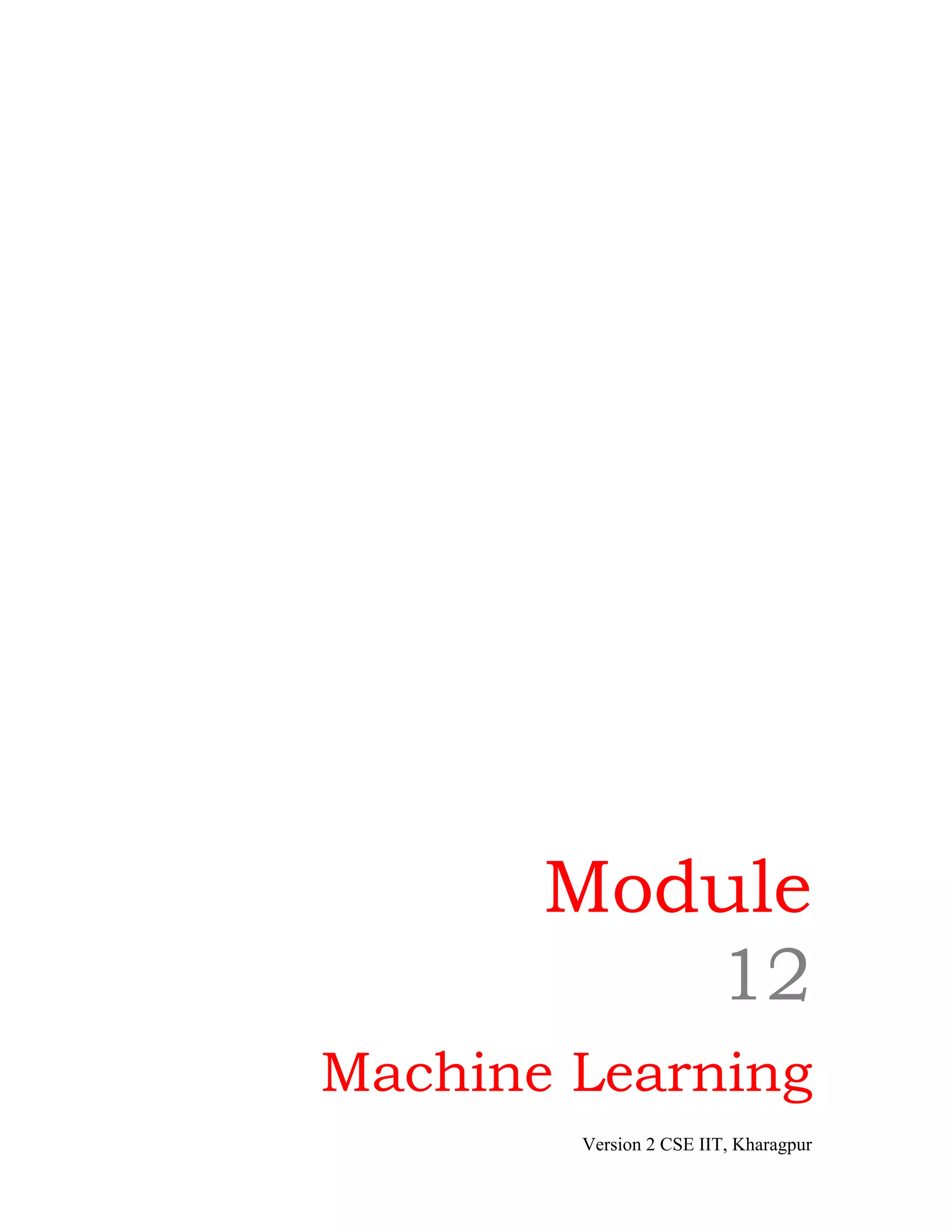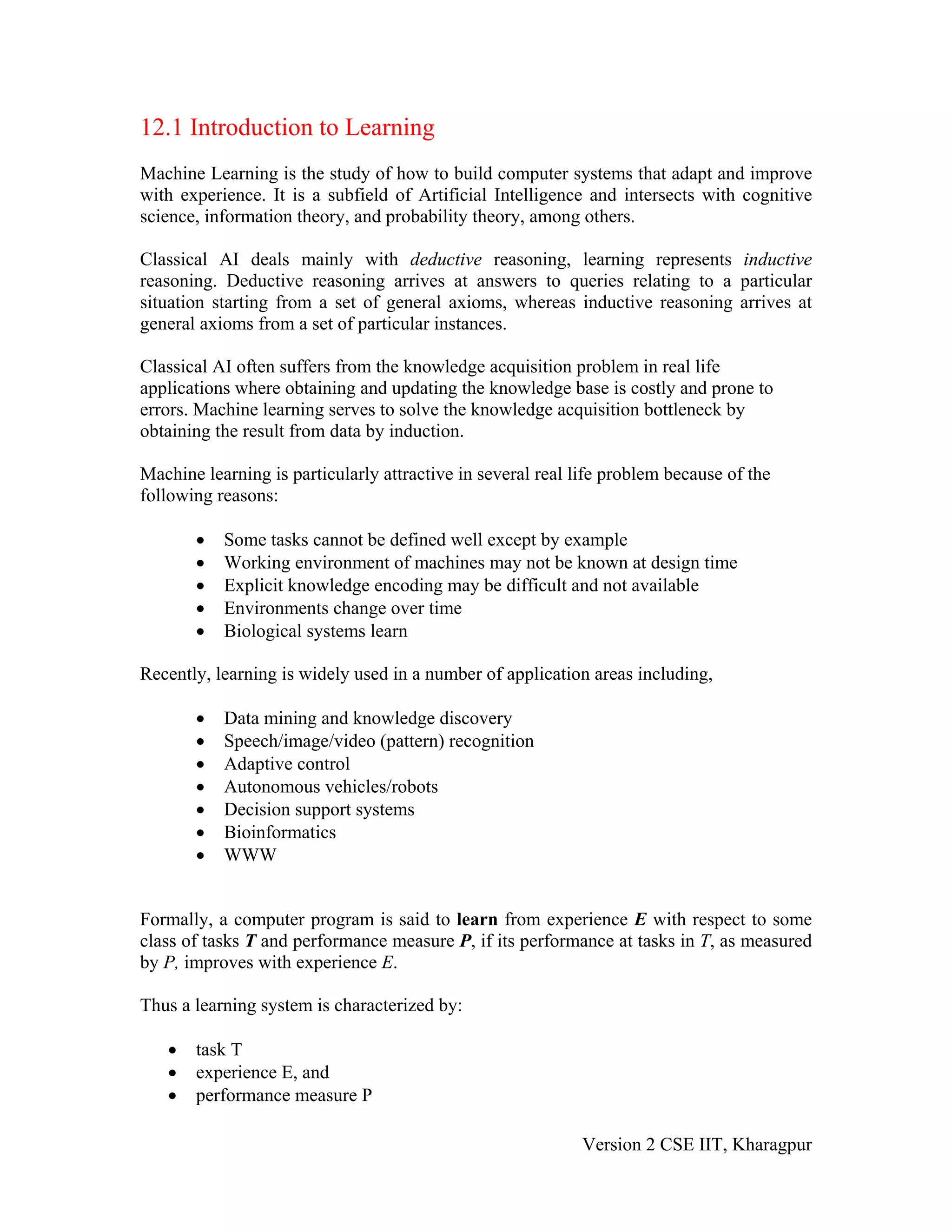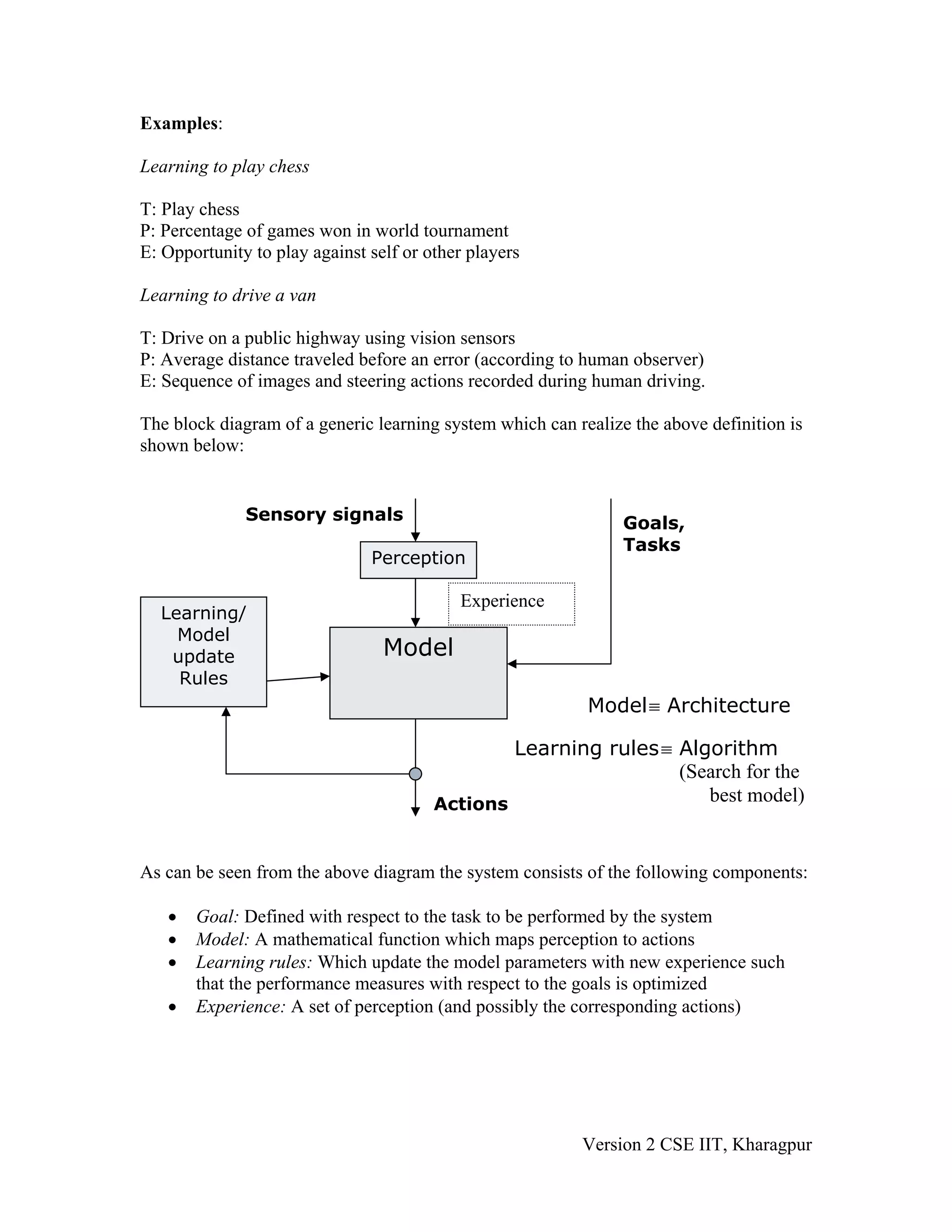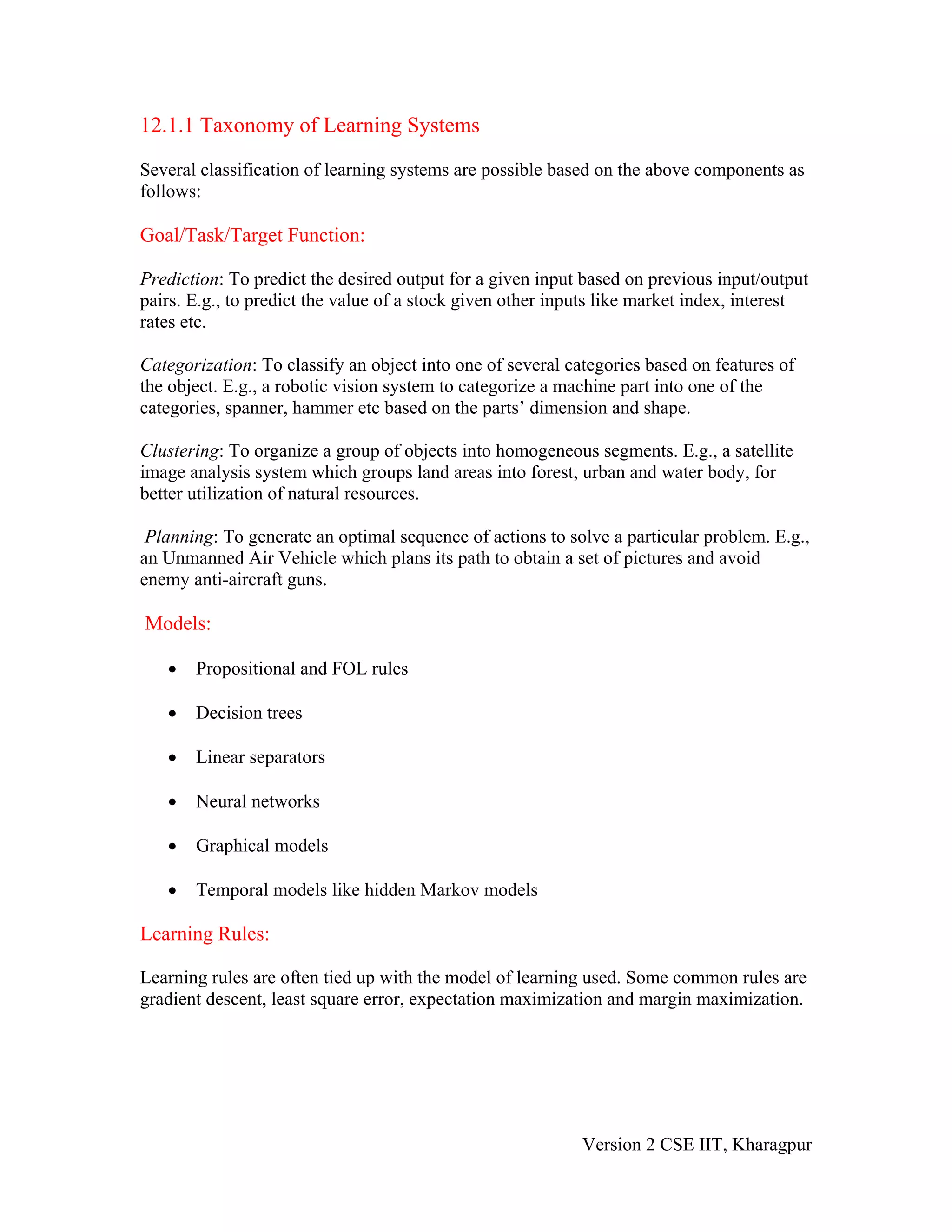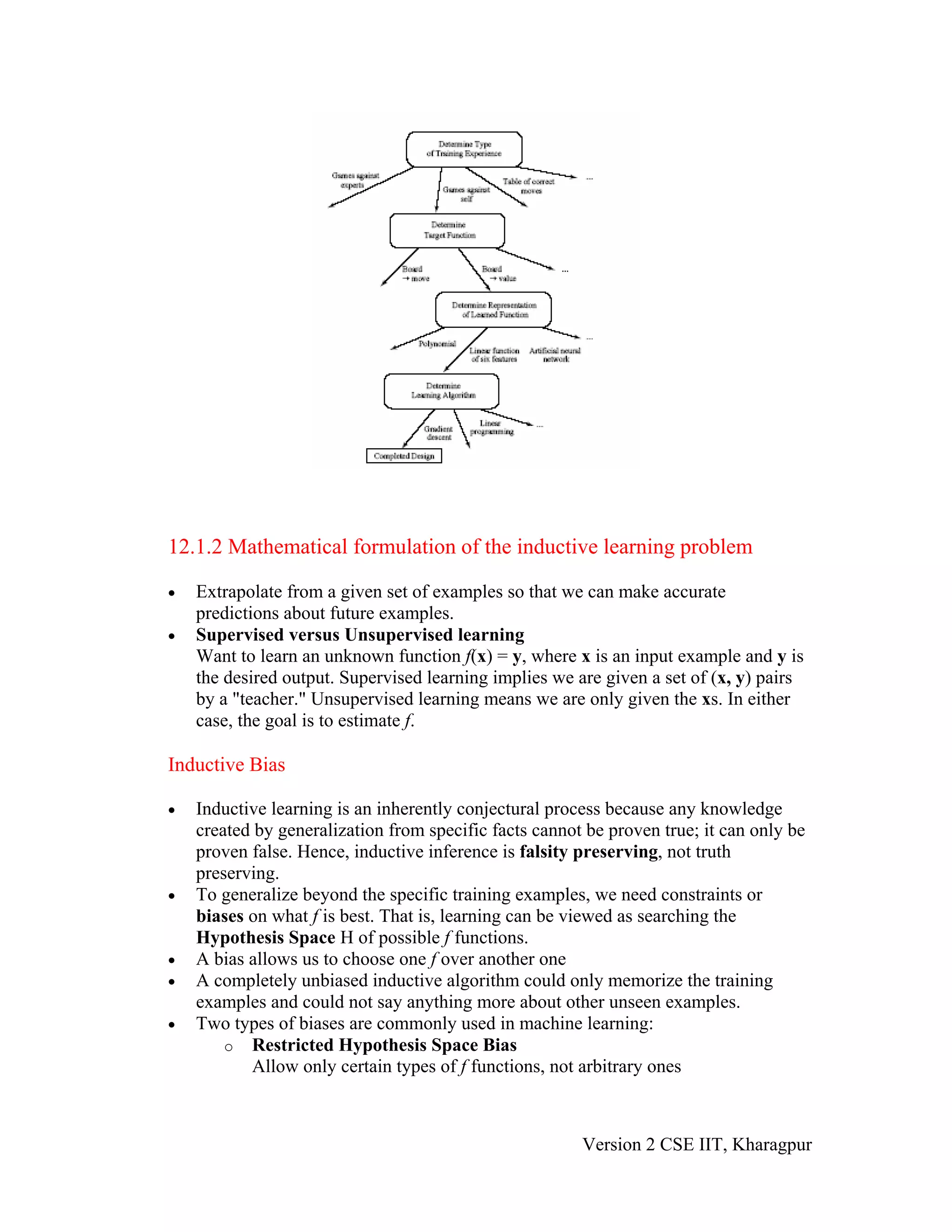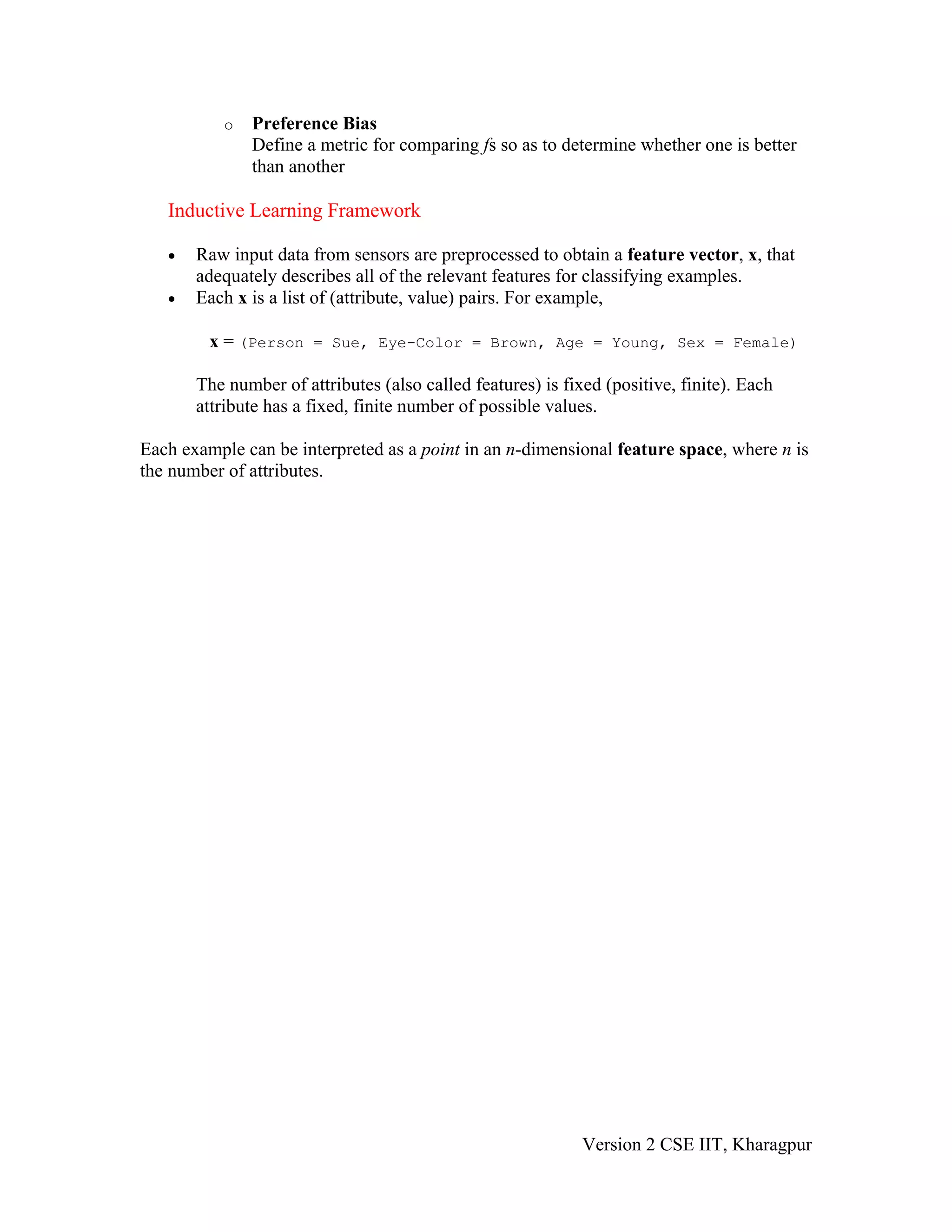The document provides an introduction to machine learning, including:
1) It defines machine learning and contrasts it with classical AI, noting that machine learning focuses on inductive reasoning by obtaining results from data.
2) It lists several reasons why machine learning is attractive for real-life problems, such as when tasks cannot be well-defined or environments change over time.
3) It outlines the key components of a learning system as the task, experience, model, learning rules, and performance measure.
